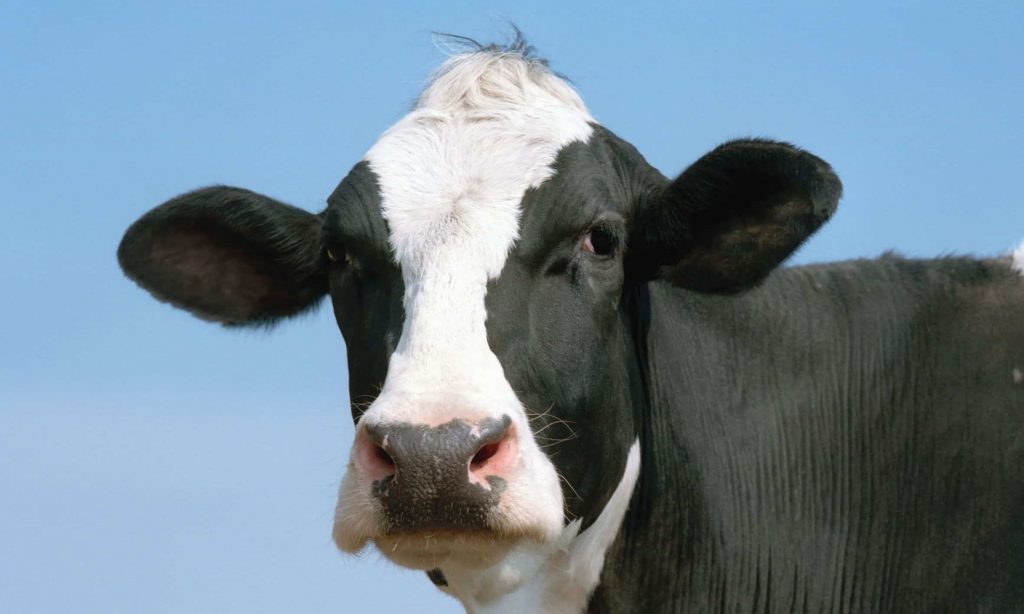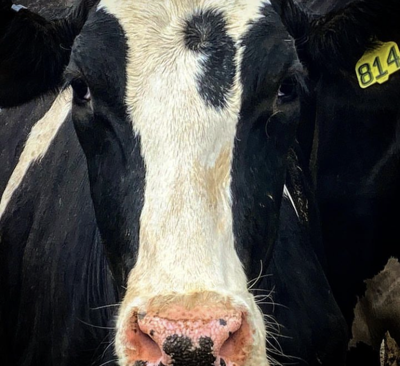The sun is shining, the cows are lowing, and the green fields are stretched out onto a lovely spring day.


The sun is shining, the cows are lowing, and the green fields are stretched out onto a lovely spring day.
But the recent seasons of dairy farming in Wisconsin are anything but rosy. Wisconsin’s dairy farms are struggling. Many have shut down entirely. According to the U.S. Department of Agriculture (USDA), the average American dairy farm has turned a profit all of two times in the past 20 years. Over the last decade, the USDA recorded a loss of nearly 17,000 dairy farms nationally, cutting the total number by nearly one-third.

Between 1997 and 2017, 64% of Wisconsin family farms shut down. According to the National Agricultural Statistics Service, more than 400 dairy farms in Wisconsin shut down last year alone, a three-year high in dairy farm losses.
“Dairy farming is an amazing economic engine,” said Lloyd, a District Director for the Wisconsin Farmers Union. “When you lose a dairy farm you lose economic and social vitality. When you lose that, you start losing small towns.”
Lloyd’s farm is located in the small town of Newport. The Wisconsin River flows nearby. Fishers ply the waters. Lake Delton’s not far. Children are playing along its shoreline. The fun hubbub of Wisconsin Dells is just down the road. Meanwhile, Lloyd’s cows continue to low on her farm.
“I’m always optimistic,” Lloyd said in regard to her hope of reversing the trends, “or else I’d be crying every day.”
The main culprit for the precipitous fall of dairy farms in the state is consolidation.
“It is very difficult,” Lloyd said, “for small and mid-sized farms to compete against larger farms.”
Lloyd, who also serves as the Director of Development for the Wisconsin Food Hub Cooperative, President of the Wormfarm Institute Board, and President of the Columbia County Farmers Union, said, “It is very difficult for a farmer to navigate the consolidation.”
It comes to dairy farmers in two main ways. One is the monopolization of the industry as a whole. The dairy industry is dominated by three companies – California Dairies, Inc., Dairy Farmers of America, and Land O’ Lakes. Those three organizations make up 83% of milk sales.
The other way is through the supply chain. The goods and services farmers rely on are being consolidated, as well. There are fewer choices a farmer can make and those selling to those farmers their goods and services can set their prices as they want, given that there are fewer and fewer options for the farmers to choose from.
Paul Dietmann, of Prairie du Sac, works for Compeer Financial, a farmer-owned cooperative. It part of the nationwide Farm Credit System, which collectively holds approximately 44% of all of the farm debt in the country.
“Last year, we had relatively good milk prices but production costs were very high, especially feed, fertilizer, and labor costs,” he said. In general, he added, milk prices have become more volatile over the years, which makes it harder for dairy farmers to predict how much profit they are likely to have in any given year.
Dietmann, who also spent 11 years as the UW-Extension Agricultural Agent for Sauk County and five years as Director of the Wisconsin Farm Center at the Wisconsin Department of Agriculture, Trade and Consumer Protection, said, “That uncertainly has caused many smaller dairy farms to quit milking and the remaining farms to increase their herd sizes in an attempt to capture economies of scale.”
Add to all this the degrading water quality of the region, the overall effects of climate change, the age of Wisconsin farmers rising, the spread of monoculture (many who leave dairy farming convert to corn or soy beans) that leads to a brittle system and less diversity, and more, it’s not hard for farmers to see how hard it is to be a farmer these days.
“We can’t get a fair shot,” Lloyd said. “And we all suffer because of it.”
Nationally, Wisconsin ranks No. 2 in milk production, behind California, generating 2.4 billion pounds of milk every month. According to the Dairy Farmers of Wisconsin, in March 2023 the state had 1.269 million cows, with each cow producing 2,155 pounds of milk. Yet less than 3% of Wisconsin farms produce, roughly, 40% of all the state’s milk.
“Larger farms keep expanding,” Lloyd said. “We have the same amount of cows as before but vastly fewer farms.”
Work can be done to help remedy these issues.
“We have laws in the books right now to enforce fair markets,” Lloyd said. “We can do something to intervene. We can urge our politicians – the people we elect – to do their jobs.”
The country’s first farm bill was passed in the 1930s during President Franklin Roosevelt’s New Deal programs. Every five years the bill expires and is updated to meet the needs of farmers. The current bill expires at the end of 2023.
“Whether you’re a farmer, or an eater, which is all of us,” Lloyd said, “We are all tied into this system. We need a bill that enforces current anti-trust laws. We need a bill that gives fair market access to all farmers. We need policies that help us all.”
Dietmann has his doubts that the next iteration of the farm bill will move the needle.
“It’s really difficult to predict what will happen with the next farm bill, or even if we will have a new farm bill when the current one expires,” he said.
With Republicans controlling the House and Democrats controlling the Senate— and both with slim majorities — reaching consensus, he feels, will be difficult.
“I don’t think we’re going to see a big shift in priorities in the next farm bill,” he said.
Some of Lloyd’s cows, out on a beautiful spring day outside Wisconsin Dells, come in to get milked. Lloyd is all too happy to facilitate that. She loves dairy farming but knows, she said, that “The world is on fire.”
“In a perfect world,” Dietmann said, “a dairy farm operating with primarily family labor would provide its owners with good cash flow and adequate profitability, and provide opportunities for subsequent generations to carry on the legacy if they so choose.”
Lloyd suggests, to learn more about the issues facing dairy farmers, to visit www.dairytogether.com. Or visit your local farmer’s market. Or buy more products from your dairy farming neighbor down the road, or else, down the road, there may not be a dairy farm there at all.
Legal notice about Intellectual Property in digital contents. All information contained in these pages that is NOT owned by eDairy News and is NOT considered “public domain” by legal regulations, are registered trademarks of their respective owners and recognized by our company as such. The publication on the eDairy News website is made for the purpose of gathering information, respecting the rules contained in the Berne Convention for the Protection of Literary and Artistic Works; in Law 11.723 and other applicable rules. Any claim arising from the information contained in the eDairy News website shall be subject to the jurisdiction of the Ordinary Courts of the First Judicial District of the Province of Córdoba, Argentina, with seat in the City of Córdoba, excluding any other jurisdiction, including the Federal.
1.
2.
3.
4.
5.
eDairy News Spanish
eDairy News PORTUGUESE
